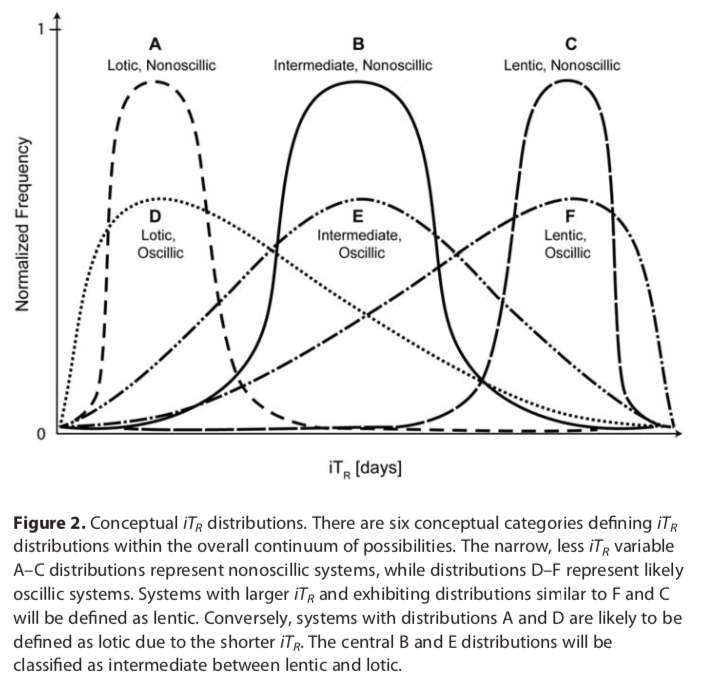Residence time-based classification of surface water systems
ABSTRACT: Defining surface water systems as lentic or lotic is an important first step in linking hydrology and ecology. Existing approaches for classifying surface water as lentic (reservoir-like) or lotic (river-like) use qualitative observations, solitary snapshot measurements in time and space, or ecologic metrics that are not broadly repeatable. This study introduces the Freshwater Continuum Classification (FCC), a quantitative method to consistently and objectively classify lentic/lotic systems based on integrated residence time (iTR), the time incoming water would take to exit the system given observed temporal variations in the system’s discharge and volume. Lentic/lotic classification is determined from comparison of median iTR with critical flow thresholds related to key time scales such as zooplankton generation. Some systems switch between lentic and lotic behaviors over time, which are additionally defined in the FCC as oscillic. Pilot application of the FCC to 15 tidally influenced river segments along the Texas Gulf Coast produced good agreement with previous methods of determining lentic/lotic character. The FCC defined 8 of 15 tidal reaches as primarily lentic, 6 as intermediate, and 1 as lotic between October 2007 and March 2015. Of the 15 reaches, 9 were also oscillic, characterized in this climate by short-lived lotic character during flash floods. The FCC provides a broadly applicable, repeatable, quantitative method to classify surface water bodies as lentic/intermediate/ lotic and oscillic/nonoscillic regardless of size or nature (e.g., river or reservoir) based on system volume and flow characteristics.


